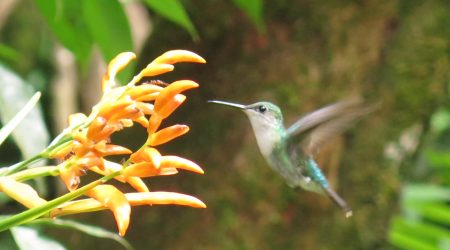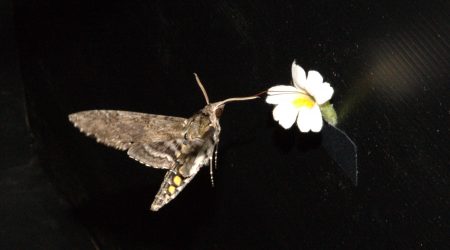Dr Kelsey Byers’ research at the John Innes Centre carries with it a whiff of intrigue...
How plants smell and how this is perceived by pollinators is Dr Byers’ primary scientific concern. In the course of her work she encounters some truly heavenly aromas wafting through woodland. At the other end of the smell scale is the hum of plants that lure unsuspecting pollinators by passing themselves off as rotten corpses or heaps of dung.
Dr Byers’ work on floral scent addresses some big biological questions, such as how new species evolve. Then there are some pressing practical questions, such as how we might create farming environments best suited to pollinators.
Along the way, the Byers group peers through the scandalous window of plant con-artistry and sexual deception to find answers to strange secret practices.
One reason is a phenomenon called brood-site mimicry.
“I studied one of these corpse flowers for my PhD, a huge multiple flower or inflorescence that grows several metres in height, and it smells so bad because the pollinators that are attracted to it are carrion beetles and flies that feed on dung”, she explains.
“If the plant is doing brood-site mimicry, it’s saying ‘I’m a great place to lay your eggs’. Of course, there is no food and so the flies and beetles are deceived into visiting because they think it is an ideal home for their babies to grow up. From the plant perspective, it’s a case of: ‘Thanks very much. You just pollinated me, but there is no food’”.
This deception runs deep. Not only does the plant smell like death, but it also produces heat and is dark red. So, to the unsuspecting beetle it looks and smells for all the world like a hospitable dead thing.
Orchids, which so fascinated Charles Darwin that he devoted an entire book to them, are also a passion for Dr Byers and offer another compelling example of scent-based scams.
Some orchids smell so convincingly like female insects that male insects excitedly engage in what is politely and scientifically termed pseudocopulation. From the beguiled insect’s position, it is all to no avail, while the sexually deceptive orchids get pollen passed between them.
At the broadest scale, the Byers group addresses a key biological question: How does floral scent contribute to the diversity of plants that we see in nature – 275,000 different species in what Darwin described as an ‘abominable mystery’.
On a narrower scale, the group looks at how large groups of flowering plants differ in floral scent and how floral-scent structures agree or disagree with the pollinators that visit those flowers.
Do floral scents arise from the family history of a group of plants and the genetics of this group, or are these scents an adaptation that has evolved to work with a specific pollinator?
The group is also interested in how floral scent and other traits, such as colour and shape, integrate to guide the visitation decisions of insects and how that integration is controlled genetically.
Dr Byers moved to the John Innes Centre last August from a lab based at Cambridge University, and this has opened new possibilities around natural products and the often commercially useful chemistry behind the trait of smell.
“My Research Assistant, Mikhaela Neequaye, remarks on how you will always find terpenes (plant natural products) on the back of a shampoo bottle”, says Dr Byers.
“Plant products find their way into industrial uses, as scents and perfumes for example, and although, as an evolutionary geneticist, it’s not my primary area of research, it is great to be in a place to speak to other people with expertise in that area”.
One of the things that Dr Byers is interested in is the role of scent in agricultural pollination.
Links between her fundamental research and the applied research of colleagues are already emerging, and she is consulting on a piece of work around oilseed rape with Professor Steven Penfield’s group at the John Innes Centre.
It is known that oilseed rape produces better crops if it is pollinated by insects, so one question is:
These emerging collaborations offer an exciting glimpse of how the genetics and evolution of floral scent may come to underpin innovative research into sustainable farming and natural-product chemistry.
It is about seeing things from the perspective of the plant and the pollinator, explains Dr Byers.
“If you go to a pollination-biology conference, you’ll find people who look at things from the plant perspective and people who look at the insect perspective, it’s really rare to find a research group that looks at things from both.
There are people who look at the intersection, but they do not look at it from both perspectives. That is something I’m really interested in working with at the John Innes Centre because we have the Entomology and Insectary platform to deal with insects and we have the people with expertise in insects and people with expertise in plants.
“I would really like to bring that integrated view together, and then to see if we can integrate both agricultural research and fundamental scientific research into understanding the production of traits that attract insects at all levels.
“This means the basic genetics, all the way to the regulation of those genetics, the development of the plants, and questions such as what does the plant smell like, look like and how does it influence its insect pollinators? That is my broad-scale vision”.









